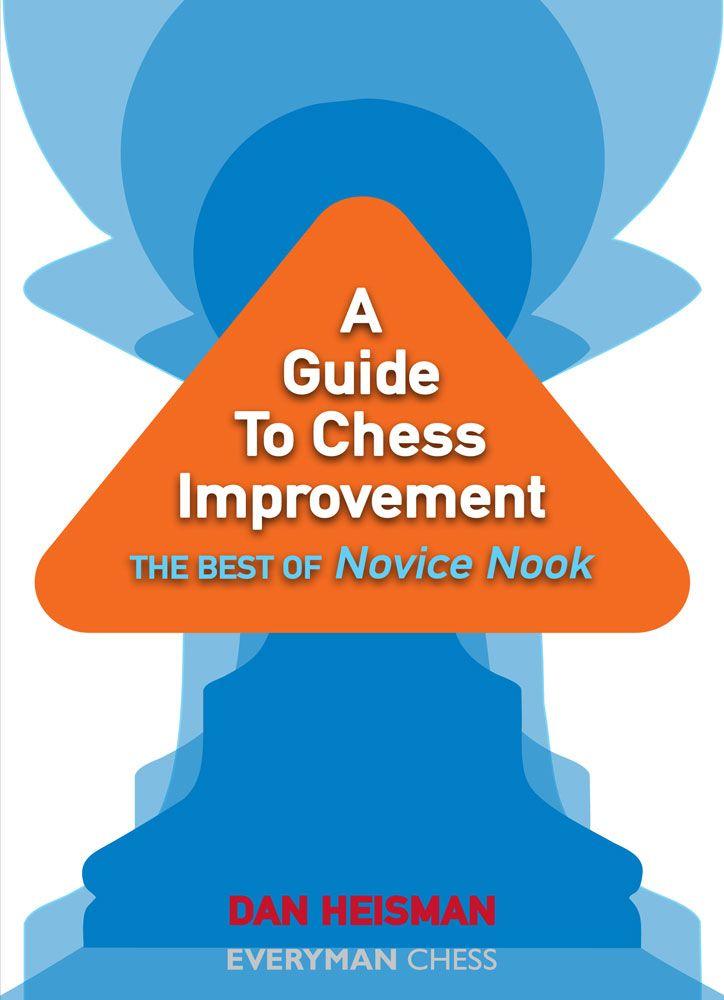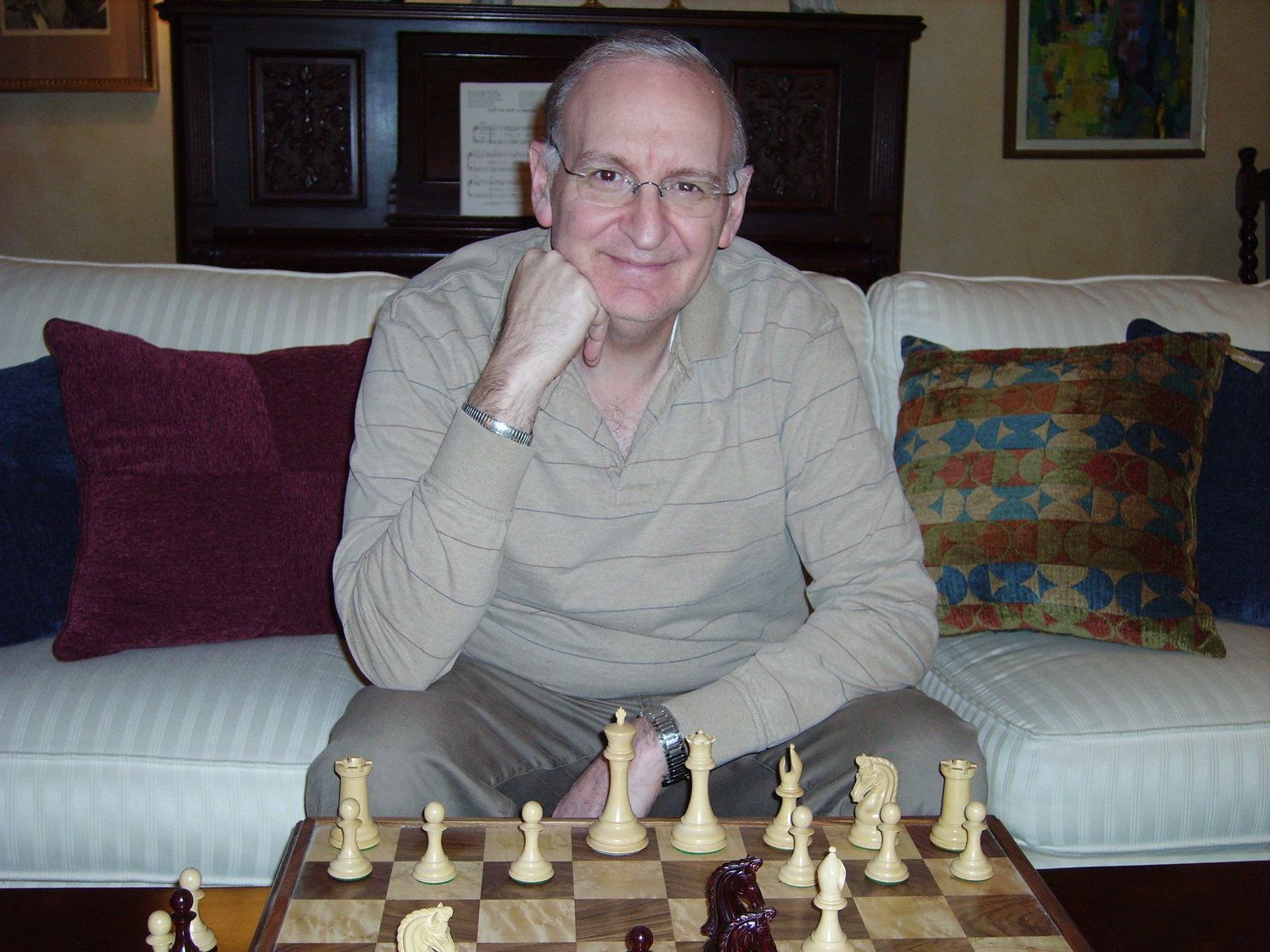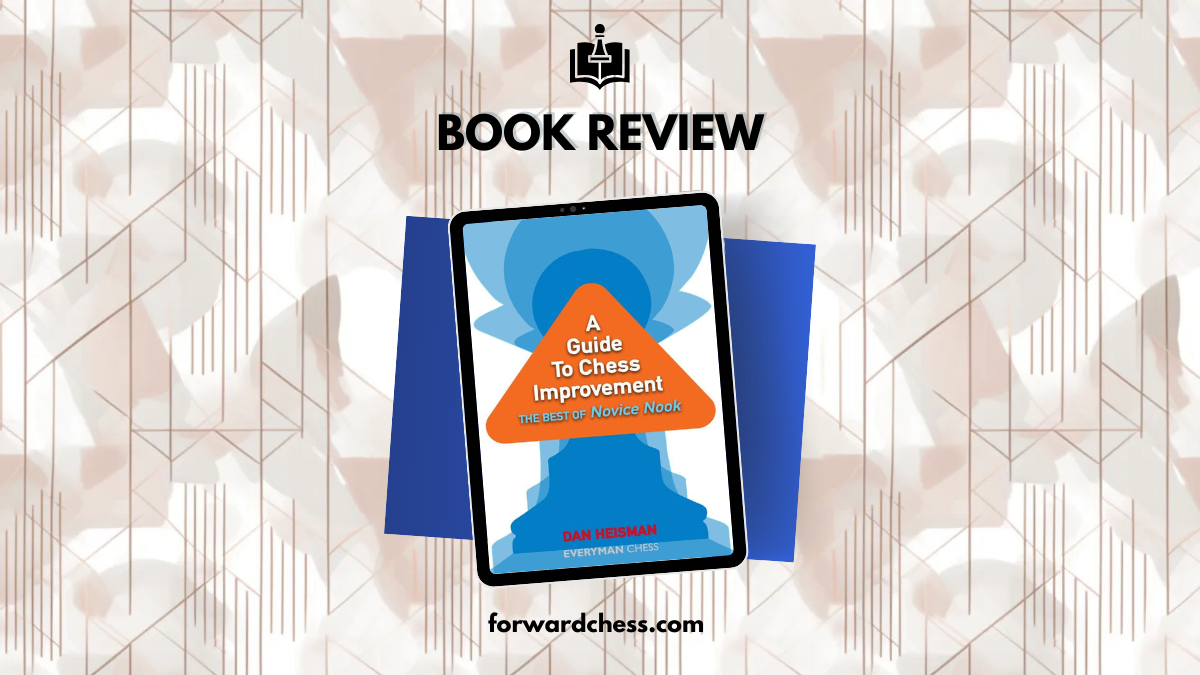Review: A Guide to Chess Improvement: The Best of Novice Nook
“No one gets good at chess quickly and without a lot of work; if that was possible I could not be a full-time chess instructor. There are no full-time tic-tac-toe instructors.” – The author.
NM Dan Heisman had a long-running column at ChessCafe, and he eventually wrote more than 150 articles under the name of Novice Nook, a title suggested by the then publisher of the website, Hanon Russell. Regarding the name, Heisman writes:
“Of course, Hanon is a very strong player and most improving adults to him are relative novices. However, I quickly found that the ideas which help a player improve at one level can still be extremely helpful when elevated to another level. So Novice Nook ended up helping players of all levels get better.
This was illustrated by an email I received from a USCF expert (2000-2199), who wrote that he learned a lot from Novice Nook, but could not get his three lower-rated sons to read the column because they felt they were not novices!… So Novice Nook remained somewhat a misnomer.”

A Guide to Chess Improvement: The Best of Novice Nook
Author: Dan Heisman
View Sample | BUY
The book is an outgrowth of around half of these columns, where the material has rearranged and streamlined into what Heisman considers the most useful content. Heisman has de-emphasised material that is included in his other books, but the basic ideas from these books are still included. Some new material has also been added to the book.

Of particular importance is that the material from the columns has been arranged in logical sections for the book, rather than following the original chronological order of the columns. This is essential for the material in the book to flow appropriately and to improve the learning process.
The book is split into nine sections as follows.
- General improvement.
- Thought process.
- Time management.
- Skills and psychology.
- Tactics and safety.
- Openings.
- Endgames and technique.
- Strategy and positional play.
- Shorter, lesson material.
Heisman notes that it is essential to have a focussed improvement plan and choosing relevant books to study, rather than reading a lot of books without any particular focus. He states:
“If you have read 200 chess books and you are still not that good; then reading a random 201st is not likely the key to getting better!”
Heisman structures his suggested improvement plan on what he calls the “Big five”:
“1. Safety
Tactics; especially important are counting and basic motifs.
2. Piece activity
Use all your pieces all the time.
3. Thinking process
Real Chess, efficient analysis.
4. Time management
Pace yourself to use almost all your time every game and allocating more time to critical moves.
5. General guidelines/principles
Learning them, and how and when to apply them.”
Heisman also offers a thinking process to help students to find the right moves in a game. In essence, the steps of what he calls a “simplified thought process” are based around five questions as follows.
“1. What are all the things my opponent’s move does?
2. What are all the positive things I want to do?
3. What are all the moves that might accomplish one or more of my goals?
4. Which of those initial candidates can I reject immediately because they are not safe?
5. Of the final candidates, which one is best?”
Of the five questions, Heisman writes:
“Interestingly, strong players usually perform steps 1-4 very quickly and then spend the overwhelming majority of their time on step 5. In a sense, many “improvement” chess books (except those on planning) are about performing step 5. However, most weak players omit one or more crucial steps, or else spend way too much time on them! Performing all the steps at least moderately well in a reasonable amount of time usually means you are on your way to becoming a good player.”
Time management is another topic that gets extensive treatment, and here Heisman introduces the important concept of move triggers that determine when to make a move. The two triggers are:
“Trigger 1: You have proven which move is best, so no further time is necessary; or
Trigger 2: You have not proven which move is best, but time constraints (good time management) make it efficient for you to play the best move you have found so far.”
Tactics are another area that Heisman treats in an original manner. In particular, he emphasises the concept of “Is it safe?”. This concept is defined as:
“A move is safe if the opponent has no forcing moves in reply that win material or checkmate.”
Heisman states that it is essential to make sure that all your pieces are well-protected to avoid falling for a tactical strike. He provides many examples of this and includes a quiz for readers to test their understanding of this concept.
He also discusses his five levels of piece safety from the most basic to the most complex:
“1. En Prise – a piece is attacked but not guarded.
2. Counting – can any sequence of exchanges win material?
3. Tactical Motifs – individual motifs for winning material or mating; e.g. pins, double attacks, removal of the guard, back-rank mates, skewers, promotion, etc.
4. Combinations – combinations of tactical motifs; for example, a pin that sets up a double attack, or an interference move that allows a back-rank mate, etc.
5. Sacrificial Combinations – combinations which include the sacrifice of material in order to force either win of material or checkmate.”
Regarding the study of tactics in general, Heisman writes:
“The most important goal of studying tactics is to be able to spot the elementary motifs very quickly, so studying the most basic tactics over and over until you can recognize them almost instantly is likely the single best thing you can do when you begin studying chess!”
As noted in the list of sections above, other important areas such as strategy, openings, chess vision and psychology are also discussed. In particular, he emphasises that chess study should be fun, rather than a chore.
Two examples from the book are given below, with annotations from the book.
For the first example, the question is who is better and why?
The initial commentary is:
“Analysis: Start by looking at checks, captures, and threats and, if there are none, look for a way to develop the pieces, for example by planning the thematic “break” move f2-f4. There are no checks and the two captures are 8.Nxe5 and 8.Bxh3.”
The final commentary is:
“Evaluation: Count material: after the principal variation starting with 8.Nxe5 White sneaks away with a pawn and is left with a better position as well, including an imposing kingside pawn majority that will get rolling after a later f2-f4. The general rule is that an evaluation of +1 pawn is about the dividing line between a theoretical win and a draw. If the opponent has compensation for the pawn you are not likely winning yet, but if he has no compensation (or you have some!) then you are winning.”
The second example is called “Letting the One-Trick Pony Win.
Of course, the book covers much more material than has been mentioned in this review, and it is of substantial size at just under 400 pages. All the concepts and suggestions are complemented by some good examples and very clear commentary. While there is some inevitable overlap across some sections, this does not distract the reader, but rather emphasises important concepts. In addition, the book includes a lot of material that has not been covered in other teaching texts.
In conclusion, this is an excellent teaching text for a wide range of players. Heisman’s many years as a chess instructor shows, and he has made the material accessible to chess students. The book provides many hours of chess instruction and is a very good guide to chess improvement.

A Guide to Chess Improvement: The Best of Novice Nook
Author: Dan Heisman
View Sample | BUY
- 1000 Published books on Forward Chess - November 15, 2024
- Book Review: A Guide To Chess Improvement - September 9, 2024
- Review: Chess Coach by Vladimir Barsky - August 26, 2024
